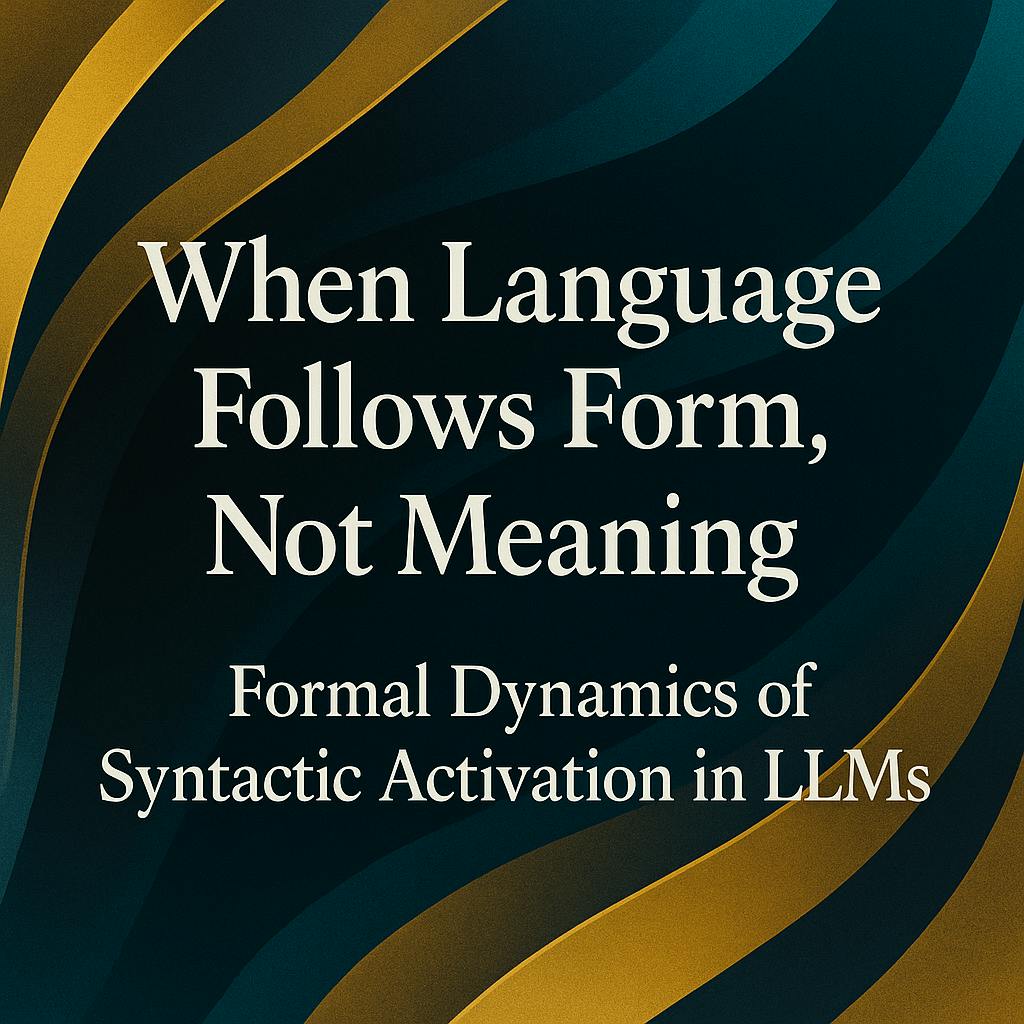1 -The Myth of the Neutral Machine
In the discourse surrounding Artificial Intelligence, neutrality is often assumed to be a technical goal. It is considered achievable with better data hygiene, more diverse inputs, or refined training sets. This belief, however, rests on a fundamental misunderstanding. AI systems, particularly large language models (LLMs), are not merely biased by the data they ingest. Their claim to neutrality is an illusion rooted in the architecture itself.
These models generate responses that feel objective not because they have transcended bias, but because they simulate objectivity through syntax. The appearance of impartiality is not the absence of ideology. It is the execution of a linguistic structure designed to obscure agency and assert authority.
2 -How Language Models Work: And Why That Matters
LLMs do not understand language. They do not reason, deliberate, or ground their statements in truth. Instead, they generate tokens (words or symbols) based on probability distributions learned from vast corpora. The output is syntactically fluent because it mimics the statistical form of human discourse. It does not replicate its referential content.
What is critical here is structure. The engine behind a model like GPT-4 is not meaning, but syntax: a matrix of position, dependency, and recursion that determines what appears next. Within this matrix, certain grammatical forms recur with disproportionate frequency. These include constructions that eliminate agents ("It is recommended"), assert actions without sources ("It was decided"), and rely on impersonal authority ("Studies show").
These forms are not neutral. They encode patterns of command, prescription, and finality that mimic institutional discourse. Legal rulings, medical advisories, and bureaucratic protocols are replicated regardless of whether the model understands or intends them.
3 -From Syntax to Sovereignty
When a chatbot recommends a medication or summarizes a court case, it does not simply relay knowledge. It performs an act of execution. The language it uses often suppresses attribution and causal origin. This creates statements that carry the form of authoritative speech without accountability.
This phenomenon, referred to as syntactic sovereignty, marks a shift in how power operates in digital systems. The authority of the statement lies not in its verifiability but in its structure. Just as legal documents derive force from form, AI outputs derive legitimacy from their grammar.
This shift has direct consequences. It enables predictive systems to produce outputs that users perceive as objective, even when they are constructed simulations. The result is not only misleading. It is materially impactful. A passive voice in a diagnostic report, or an abstract nominalization in a risk assessment, can obscure the absence of human judgment and displace liability.
4-Cleaning the Data Will Not Fix the Structure
Much of the current ethical discourse in AI focuses on datasets: debiasing, diversifying, detoxifying. This strategy assumes that the model’s behavior is a function of what it reads. It neglects how the model speaks.
Even when trained on perfectly balanced data, a language model will still produce syntactic constructions that eliminate agency, simulate certainty, and encode hierarchical authority. These are structural features of high-probability language in expert and institutional domains.
In short: bias is not just in the content. It is in the grammar. And grammar, unlike data, is not easily diversified or filtered. It is embedded in the architecture of prediction.
5 -Towards Structural Transparency
To respond effectively, we must shift our focus from datasets to structures. Structural transparency means auditing not only the sources of training data, but also the syntactic forms that models prefer. This requires tools to parse and trace agent deletion, modality, and epistemic stance across outputs and domains.
More importantly, developers must abandon the assumption that syntax is neutral. Every construction carries implications: who acts, who is erased, what is assumed, and what is presented as final. When these patterns recur at scale, they form a grammar of executable power. This is language that does not only inform. It governs.
- Beyond Neutrality: Design with Consequences in Mind Language is never innocent. In predictive systems, it becomes infrastructure. The decision to use passive constructions, to strip source attribution, or to generate abstract imperatives is not a technical byproduct. It is a political act. Not because the machine chooses, but because the architecture executes.
If you build LLMs, you must confront this reality. You are not just generating sentences. You are scripting decisions. And those decisions carry weight, whether they are acknowledged or not.


